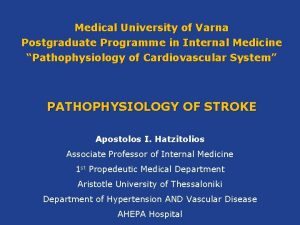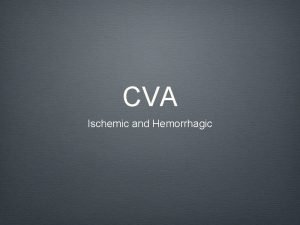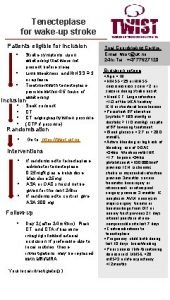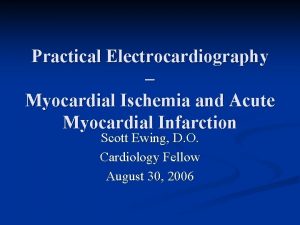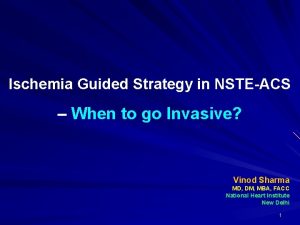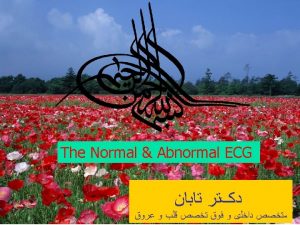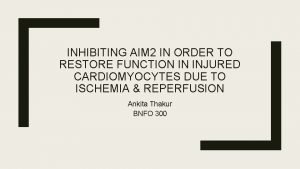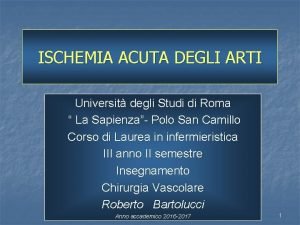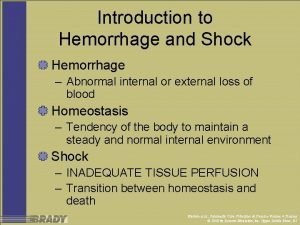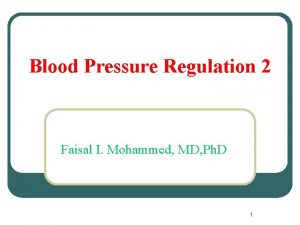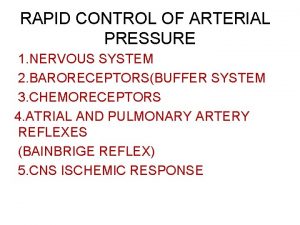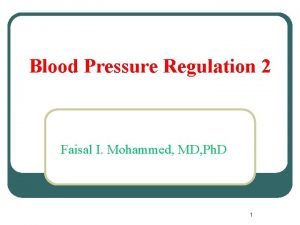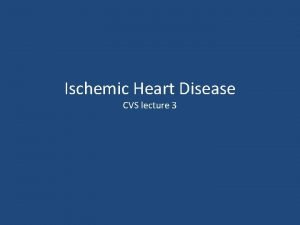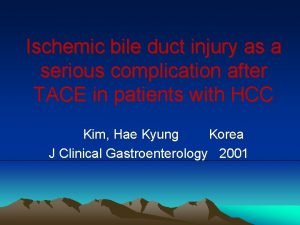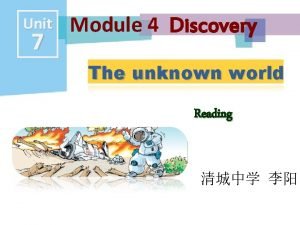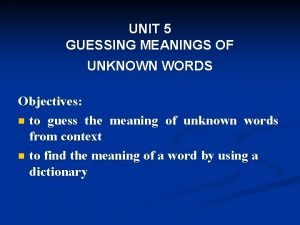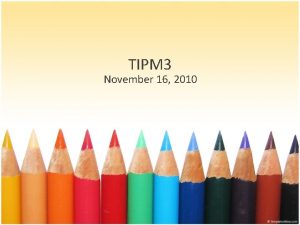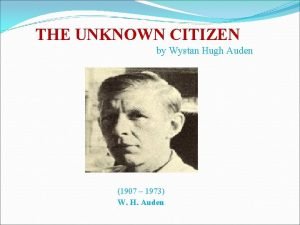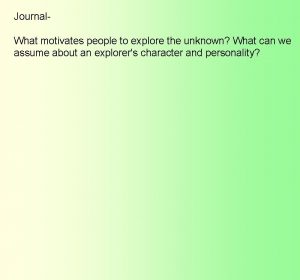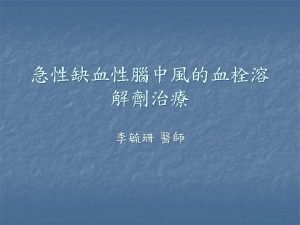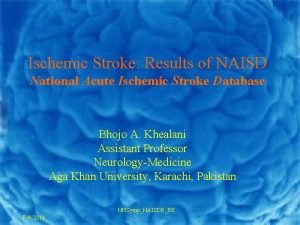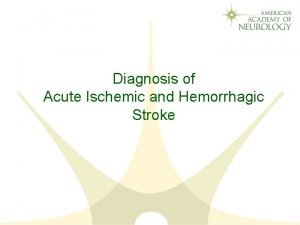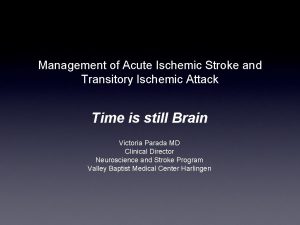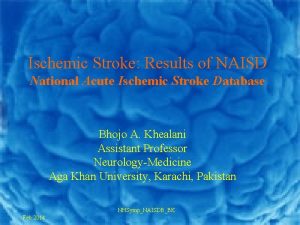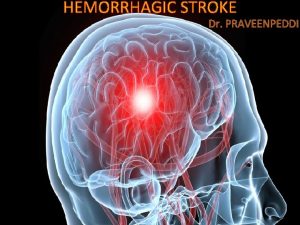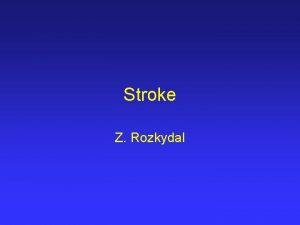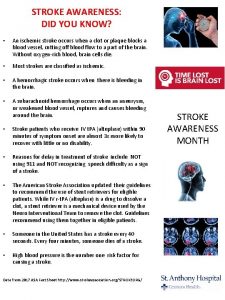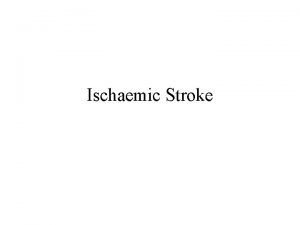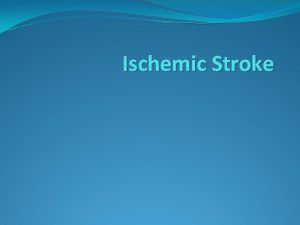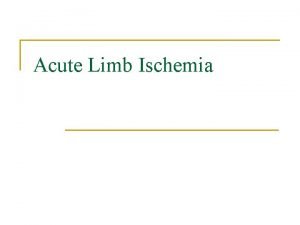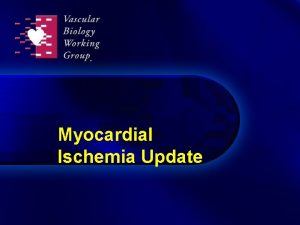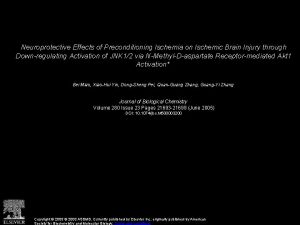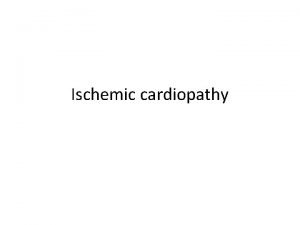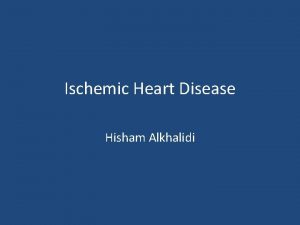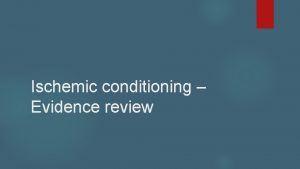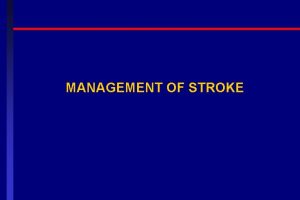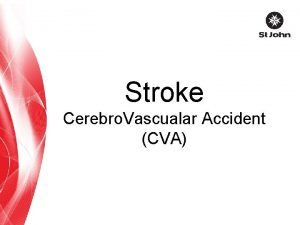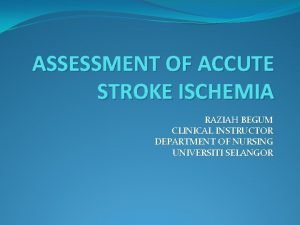Introduction Stroke 80 ischemia Ischemic stroke 1 Unknown


























- Slides: 26


Introduction • Stroke: 80% ischemia • Ischemic stroke: 1. Unknown etiology: 30 -40% 2. Carotid stenosis: 20 -25% 3. Af: 10% ( incidence in aged groups) 4. Major intracranial artery stenosis: 5 -10% Medicine 2017; 96(4): e 5999 衛服部統計處

Carotid Stenosis Natural History Asymptomatic (> 80%) carotid stenosis Dizziness, Syncope 6% risk of stroke / year Symptomatic (> 50%) carotid stenosis Major/ Minor stroke, Amaurosis fugax, TIA 10% risk of CVA at 1 year 40% risk of CVA at 5 years

Carotid Stenting Has been known: 1. An effective alternative Tx for stroke prevention National Heart Lung and Blood Insitute (NIH)

86/M, TIAs, Rt carotid stenosis MTT pre post 2 nd day

Carotid Stenting Has been known: 2. Additional positive effects: u Cerebral hemisphere & Brainstem Hemodynamics QOL Cognitive function– Sensory organ u How about ear? u u


Objectives n To quantitatively evaluate the influence of carotid stenting on Hearing function

Methods and Patients 1 n Inclusion l n Adult patients with carotid stenosis (70 -99%) admitted for carotid stenting Exclusion: l l Any history or current middle, inner ear Dz Contraindication of stenting (major disabling stroke on the ipsilateral side/disabling dementia/ thick calcification at the site of carotid stenosis) l Hemorrhagic or brainstem stroke

Methods and Patients 2 n Pre-stent post stent 6 M>post 6 M post Pre-stent/ 1 M 1 M post stent/ stent 1. PTA, SRT 2. DHI 3. SF-36

1. DHI (Dizziness Handicap Inventory): 25 items, 0 -2 -4 scores for each items, 0 -100 scores (Lower scores indicate better health status) A. Emotional well-beings: 9 items B. Functional activities: 9 items C. Physical activities: 7 items Acta Otolaryngol 2001; Suppl 545: 145– 154 Ann Otol Rhinol Laryngol 2001; 113: 1006 -11


2. SF-36 (Medical outcome study, 36 -Item Short-Form Health Survey): 36 items, 8 domains, 0 -100 scores (Higher scores indicate better health status) A. 4 Physical domains: Physical functioning; Role limitation due to physical problems; Bodily pain; Vitality B. 4 Emotional domains: General health perceptions; Social functioning; Role limitation due to emotional problems; Mental health Qual Life Res 2000; 9: 675 -83 J Vasc Surg 2001; 33(2): 329 -33


Results • Successful stenting in all 73 patients Patients with prior history of cancer included 12 (16. 4%) NPC, buccal cancer 3 (4. 1%), 1 (1. 4%) cancer of salivary gland, 1 (1. 4%) cancer of soft palate & NPC, 1 (1. 4%) cancer of tongue, 1 (1. 4%) laryngeal cancer, 1 (1. 4%) tonsillar cancer, 1 (1. 4%) thymoma, and 1 (1. 4%) right breast

Follow up: 21. 2 ( 8. 1) months

n Complications in 3: • 1 minor stroke, 1 TIA, 1 hyperperfusion syndrome good recovery without neurological sequelae


P=0. 05


Discussion 1 n Nonspecific dizziness in patients with hemodynamically significant carotid stenosis u 60. 3% (44/73) in our series − 14 -21% in the literature n J Am Geriatr Soc 1981; 29: 402 -6 Br Med J 1961; 2: 1057 -63 Risk factors for carotid stenosis u u Age, male, HTN, hyperlipidemia, smoking 27% (20/73) had H&N R/T in our series Medicine 2017; 96(4): e 5999 − 8 Y carotid a. stenosis 29% − 10 Y incidence of cerebrovascular event 25 -34% in R/T Oral Oncol 2018; 80: 9 -15 Intervent Neurol 2013; 2: 183– 192

Discussion 2 n No hearing ability change in our series n Carotid endarterectomy (CEA) could improve auditory acuity J Vasc Surg 2015; 62: 635 -44 at all tested frequencies

n Postulation: re-vascularizing the carotid artery will perfusion in the inner ear and the auditory pathway n Auditory cortex (area 41, 42, 22)? Patency of a-com, p-com? n J Vasc Surg 2015; 62: 635 -44 AJNR 2003; 24: 456– 462

Discussion 3 n Qo. L can be improved by carotid stenting 1. DHI − Physical subscale, Functional subscale − Our series: Emotional subscale 2. SF-36 − Our series: Physical function, Physical role limitation, Emotional role limitation − General Health, Social function JCMA 2014; 77: 403 -408 J Vasc Surg 2005; 42: 213 e 9 JACC Cardiovasc Interv 2010; 3: 515 e 23 J Am Coll Cardiol 2011; 58: 1557 e 65

Conclusion 1. Nonspecific dizziness (asymptomtic) present in a number of patients with hemodynamically significant carotid stenosis n Risk factors……. 2. Carotid stenting n in SF 36 (PF, RP, RE) n in DHI (emotional domain) n No change on PTA SRT, ipsi or contra

Thanks For Your Attention
 Mechanism of ischemic stroke
Mechanism of ischemic stroke Stroke protocol
Stroke protocol Ischemic vs hemorrhagic stroke
Ischemic vs hemorrhagic stroke Tenekteplase
Tenekteplase Q wave
Q wave What is ischemia guided strategy
What is ischemia guided strategy Normal ecg pr interval
Normal ecg pr interval Myocardial ischemia meaning
Myocardial ischemia meaning Ischemia acuta degli arti
Ischemia acuta degli arti Cns ischemic response
Cns ischemic response Cns ischemic response
Cns ischemic response Mean bp formula
Mean bp formula Bainbridge reflex
Bainbridge reflex Pathophysiology of ischemic heart disease
Pathophysiology of ischemic heart disease Chronic coronary syndrome
Chronic coronary syndrome Superadded changes in coronary atherosclerosis
Superadded changes in coronary atherosclerosis Optic ischemic neuropathy
Optic ischemic neuropathy Ischemic bile duct injury
Ischemic bile duct injury Anterior stroke vs posterior stroke
Anterior stroke vs posterior stroke The unknown world worksheet answers
The unknown world worksheet answers Guessing the meaning of unknown words
Guessing the meaning of unknown words Separate result unknown
Separate result unknown By unknown author is licensed under
By unknown author is licensed under Literary devices in the unknown citizen
Literary devices in the unknown citizen Joe and harry window
Joe and harry window Separate result unknown
Separate result unknown Examples of exploring the unknown in literature
Examples of exploring the unknown in literature
